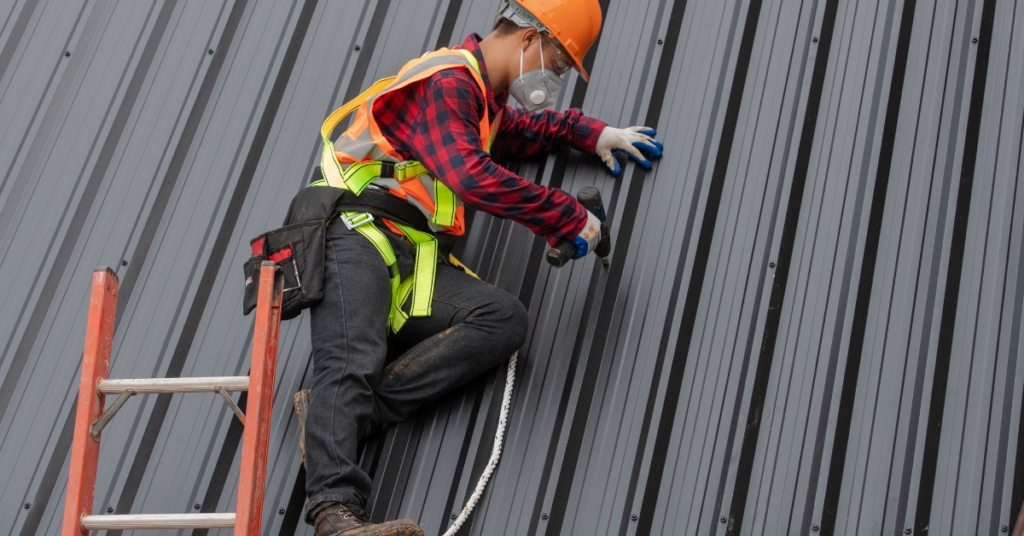
In Oregon, DIY home improvement projects, including roofing, are a popular way for homeowners to maintain and enhance their properties. While tackling roofing projects on your own can be rewarding and cost-effective, safety must be a top priority. Proper precautions can prevent accidents and ensure a successful roofing project. Here are some essential roofing safety tips for DIY enthusiasts.
Preparation and Planning
Before you even set foot on the roof, thorough preparation is crucial. Start by assessing the roof’s condition and the weather forecast. Avoid working in rainy, windy, or excessively hot conditions to minimize the risk of slips and heat-related issues.
Gather all necessary tools and materials beforehand. Having everything within reach reduces unnecessary trips up and down the ladder, which can be hazardous. Inform a friend, family member, or neighbor about your roofing project. This way, someone knows where you are and can check in periodically.
Personal Protective Equipment (PPE)
Wearing the right clothing and protective gear can make a significant difference in your safety. Wear long pants, a long-sleeved shirt, and non-slip shoes to protect your skin and provide good traction.
Essential PPE for roofing includes:
- Gloves: Protect your hands from sharp objects and rough surfaces.
- Helmet: Shields your head from potential falling debris.
- Safety glasses: Protect your eyes from dust, debris, and bright sunlight.
- Harness and ropes: Especially important for steep roofs, these provide fall protection.
Ladder Safety
Choosing the right ladder and using it correctly is fundamental for roofing safety. Ensure your ladder is tall enough to reach the roof without needing to stand on the top rungs. Place the ladder on a stable, level surface and secure it at the top to prevent slipping.
When climbing, maintain three points of contact (two hands and one foot, or two feet and one hand) to ensure stability. Avoid overreaching from the ladder; instead, climb down and reposition it as needed.
Working on the Roof
Once on the roof, keep your workspace clean and organized. Loose debris and tools can become tripping hazards. Be mindful of your surroundings, especially roof edges and power lines. Never work near power lines without proper precautions.
Using roof brackets and guardrails adds an extra layer of safety. Roof brackets provide a stable platform to stand on, while guardrails can prevent falls from the roof’s edge.
Handling Tools and Materials Safely
Proper use and maintenance of your tools are essential. Always follow the manufacturer’s instructions and ensure tools are in good working condition. Keep your tools within easy reach to avoid overextending and losing balance.
When handling roofing materials, take care to distribute the weight evenly. Avoid carrying too much at once, which can lead to loss of balance. Store materials in a secure, flat area to prevent them from sliding off the roof.
Dealing with Hazards
Roofing can present numerous hazards, including loose shingles, wet surfaces, and structural damage. Identify and avoid these common issues. For example, stay away from areas with visible damage until properly assessed and repaired.
Have an emergency plan in place. Know the location of the nearest medical facility and have a first aid kit on hand. In case of an accident, having a plan can expedite response times and minimize injury severity.
Stay Safe and Succeed with Your DIY Roofing Project
Safety should always come first in any roofing project. By following these roofing safety tips, you can ensure a safer and more efficient DIY roofing experience. Remember, it’s better to take your time and be safe than to rush and risk injury. If you ever feel uncertain or overwhelmed, don’t hesitate to contact professional roofing services for assistance.
For expert roofing services in Oregon, reach out to Stutzman & Kropf Contractors. We’re here to help you with all your roofing needs, ensuring safety and quality every step of the way.
